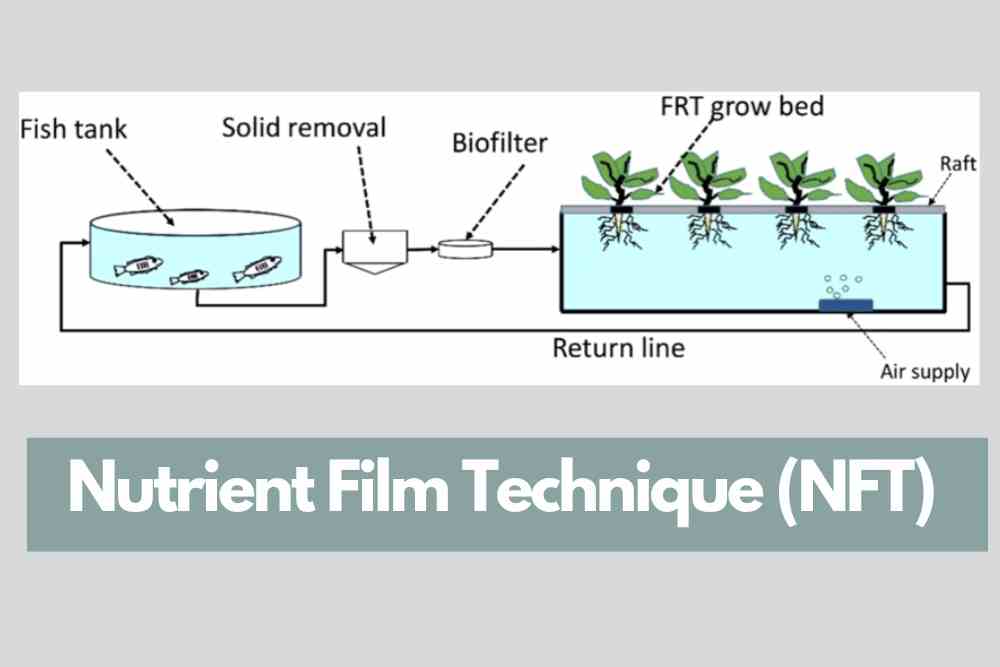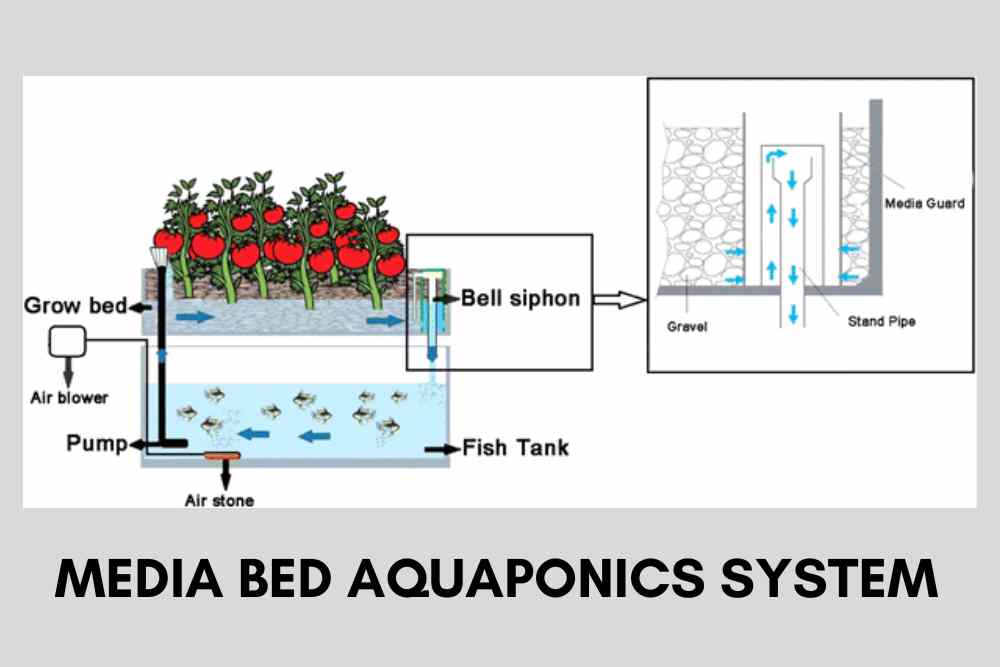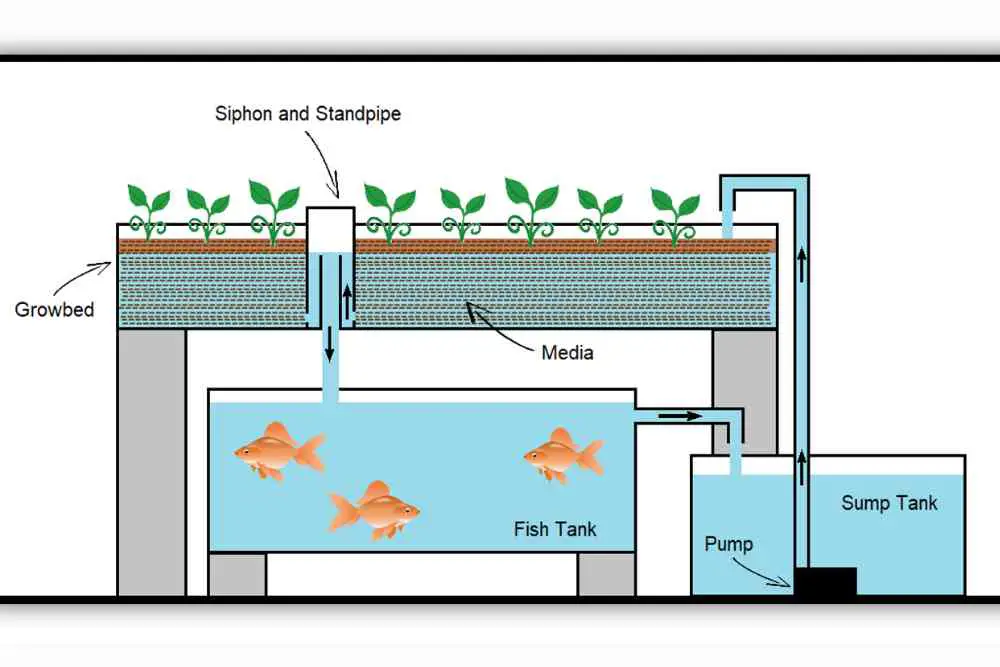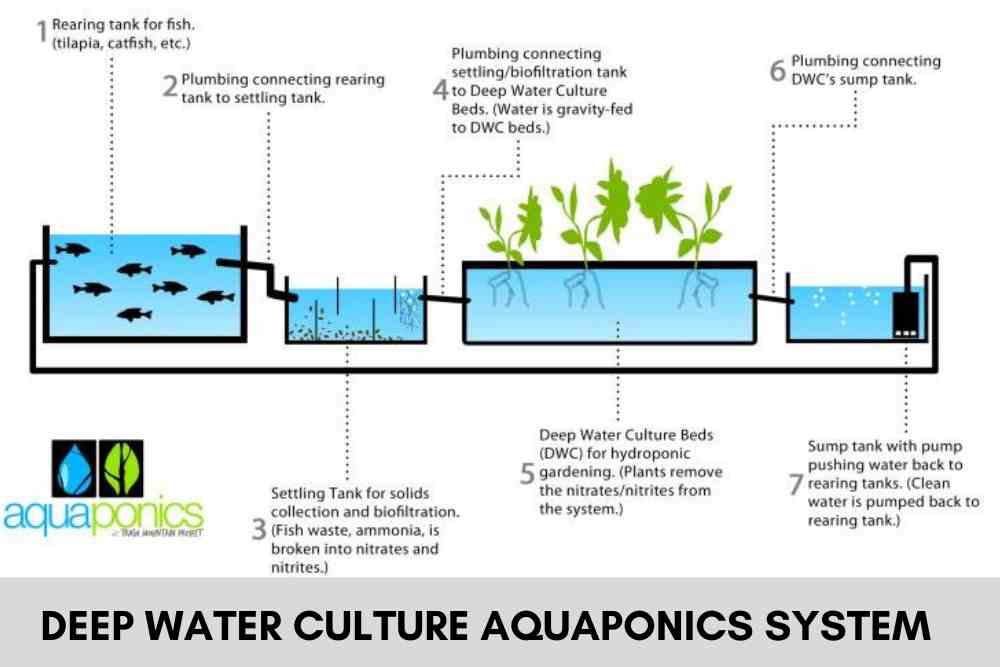Aquaponics is an efficient, sustainable way to grow plants and raise fish in one integrated system.
It combines hydroponics, which is the growing of plants in water, and aquaculture, which is the farming of aquatic animals such as fish.
There are several different types of aquaponics systems available for hobbyists, commercial growers, and educational institutions.
Each system has advantages and disadvantages that should be taken into consideration when making a decision.
The article provide a detailed information about different types of aquaponics systems and their benefits and limitations.
Different Types of Aquaponics Systems
Aquaponics is an exciting, sustainable way to grow both plants and fish in a mutually beneficial environment.
It combines aquaculture (fish farming) and hydroponics (soil-less plant growth) into a symbiotic system where the water is recirculated between the two components.
This method of food production can be scaled to fit any kind of space, from small home gardens to commercial operations.
The aquaponics system can be divided into different types and based on a variety of techniques.
Aquaponics systems can be divided into three categories:
- Nutrient Film Technique (NFT)
- Media Bed System
- Deep Water Culture (DWC)
1. Nutrient Film Technique (NFT)

Nutrient Film Technique (NFT) is a type of aquaponics system where a thin film of water containing nutrients is continuously flowed over the roots of plants, which are grown in troughs or channels.
The water is pumped from the fish tank to the grow bed, and then gravity returns the water back to the tank.
This creates a closed-loop system where the plants are fed by the nutrients produced by the fish waste and the water is cleaned by the plants.
In NFT aquaponics, equipment typically used includes: a water pump, tubing, a trough or channel for plant growth, a grow bed for the plants, a fish tank, and a water flow system.
The water flow system helps to control the flow of water from the fish tank to the grow bed.
Pros of NFT Technique in Aquaponics:
Simple and low-cost setup: NFT systems are relatively simple to construct and require fewer materials compared to other aquaponics systems, making them a cost-effective option.
Uses less water: NFT systems use a minimal amount of water, making them ideal for arid regions or areas with limited water resources.
Space-efficient: NFT systems are highly space-efficient and can be easily scaled up or down to meet specific needs.
High productivity: NFT systems have the potential to produce high yields due to the continuous flow of nutrient-rich water over the roots of the plants.
Potential for automation: Another benefit is the huge potential for automation to reduce labor expenses (planting and harvesting), as well as the chance to control the ideal plant density throughout the crop cycle.
Cons of NFT Technique in Aquaponics:
Prone to clogging: NFT systems can easily become clogged with debris, reducing the flow of water and potentially harming the plants.
Pump failure from clogging or a power supply failure because of the absence of substrate and low water levels.
Delicate and requires frequent monitoring: NFT systems are more delicate compared to other aquaponics systems and require frequent monitoring to ensure proper water flow and to prevent imbalanced conditions.
Variations in the temperature of the fertilizer solution can stress plants and lead to illnesses.
High risk of disease outbreaks: The continuous flow of water in NFT systems can create an environment that is conducive to disease outbreaks, requiring careful monitoring and management.
Limited plant diversity: NFT systems are typically only suitable for growing certain types of plants, such as herbs and lettuce, limiting the diversity of crops that can be produced.
Requires consistent water flow: NFT systems depend on a consistent water flow to be successful, and even minor disruptions to the flow can have a significant impact on the health and growth of the plants.
2. Media Bed Aquaponics System

A Media-Based Aquaponics System is a type of aquaponics system where plants are grown in a bed of grow media, such as gravel or clay pebbles, instead of being suspended in water like in NFT systems.
In this type of system, water is pumped from the fish tank to the grow bed and then back to the tank.
The grow media acts as a biological filter, removing nitrogen waste produced by the fish and providing a stable environment for the plants to grow.
The equipment used in a Media-Based Aquaponics System typically includes: a water pump, tubing, a grow bed filled with grow media, a fish tank, an air pump and air stones, a water flow system, and a plant support system.
The water flow system helps to control the flow of water from the fish tank to the grow bed and back, while the air pump and air stones ensure proper aeration of the water and the plants.

The plant support system holds the plants in place and helps to prevent them from being submerged in the water.
In a Media-Based Aquaponics System, the plants absorb the nutrients from the water and clean it, while the fish provide the nutrients for the plants through their waste.
This creates a symbiotic relationship that allows for a closed-loop system where the water is continually cleaned and recirculated, providing a sustainable and efficient way to grow plants and raise fish.
Media-based aquaponics System is a small-scale aquaponics systems frequently use the flood drain technique. Because it is simple to use, aquaponic home farmers also like it.
The design of the media-based system is straightforward, efficient with regard to area, and has a small starting cost making it ideal for aquaponics beginners.
Pros of Media-Based Aquaponics Systems
Stable and resilient system: The use of grow media provides a stable environment for the plants, reducing the risk of imbalanced conditions and making the system more resilient overall.
Diverse plant selection: Media-based systems are suitable for growing a wider range of plants compared to NFT systems, including fruiting and flowering plants.
Low maintenance: Media-based systems require less monitoring and maintenance compared to NFT systems, making them ideal for those with limited time or resources.
Lower risk of disease outbreaks: The use of grow media helps to reduce the risk of disease outbreaks compared to NFT systems, as it provides a more controlled environment for the plants.
Cons of Media-Based Aquaponics Systems
Higher cost and setup: Media-based systems require a more extensive setup and can be more expensive compared to NFT systems, due to the need for grow media and other equipment.
Increased water usage: Media-based systems use more water compared to NFT systems, which can be an issue in areas with limited water resources.
Risk of clogging: The grow media can become clogged with debris over time, reducing water flow and potentially harming the plants.
Space requirement: Media-based systems typically require more space compared to NFT systems, which may not be suitable for those with limited space.
Complexity: Media-based systems can be more complex compared to NFT systems, requiring a better understanding of aquaponics principles and techniques to successfully manage the system.
3. Deep Water Culture (DWC) Aquaponics System

Deep Water Culture (DWC) Aquaponics System is a type of hydroponic system that utilizes a nutrient-rich water solution to grow plants.
In this type of aquaponics system, the plants are suspended in the water with their roots suspended in an airtight container filled with the nutrient-rich water.
An air pump and air stones are used to provide oxygen to the roots, allowing the plants to absorb the nutrients from the water.
The equipment used in a DWC Aquaponics System typically includes: a water pump, tubing, an air pump and air stones, an airtight container filled with the nutrient-rich water, and a plant support system.
The water pump helps to circulate the water and provide fresh nutrients to the plants, while the air pump and air stones help to aerate the water and ensure proper oxygen levels.
The plant support system holds the plants in place and prevents them from being submerged in the water.
In a DWC Aquaponics System, the water is continuously circulated, providing the plants with a constant supply of nutrients and allowing for a closed-loop system where the water is continually cleaned and recirculated.
This type of system is ideal for growing fast-growing crops and can provide high yields in a relatively small space.
The fish in the system provide the nutrients for the plants through their waste, creating a symbiotic relationship between the plants and the fish.
Pros of Deep Water Culture (DWC) Aquaponics System
High yields: DWC systems are capable of producing high yields in a relatively small space, making them ideal for growing fast-growing crops.
Energy-efficient: DWC systems are typically more energy-efficient compared to other types of aquaponics systems, as they require less water and electricity to operate.
Reduced plant maintenance: DWC systems require less maintenance compared to other types of aquaponics systems, as the plants are suspended in the water and do not require regular pruning or soil preparation.
Ideal for urban areas: DWC systems can be set up in urban areas, as they require a relatively small amount of space and do not produce significant amounts of noise or waste.
Cons of Deep Water Culture (DWC) Aquaponics System
High start-up cost: DWC systems can be more expensive to set up compared to other types of aquaponics systems, as they require specialized equipment and materials.
Water temperature: The water temperature must be carefully controlled in DWC systems to ensure the optimal growth of the plants and the fish.
Technical knowledge required: DWC systems require a good understanding of hydroponic principles and techniques, and mistakes can have significant consequences for the plants and fish.
Risk of disease: DWC systems can be prone to disease outbreaks if proper precautions are not taken, as the plants and roots are suspended in the water for extended periods of time.
Maintenance of water chemistry: DWC systems require consistent monitoring of water chemistry to ensure that the water remains within the optimal range for the plants and fish.
References
- Panigrahi, G. K., Panda, S., & Padhi, S. N. (2016). Aquaponics: An innovative approach of symbiotic farming. International journal of bioassays, 5(09), 4808-4814.
- El-Kazzaz, K. A., & El-Kazzaz, A. A. (2017). Soilless agriculture a new and advanced method for agriculture development: an introduction. Agric. Res. Technol. Open Access J, 3, 63-72.
- Adhikari, R., Rauniyar, S., Pokhrel, N., Wagle, A., Komai, T., & Paudel, S. R. (2020). Nitrogen recovery via aquaponics in Nepal: current status, prospects, and challenges. SN Applied Sciences, 2, 1-15.
- Ajijah, N., Apriyana, A. Y., Sriwuryandari, L., Priantoro, E. A., Janetasari, S. A., Pertiwi, T. Y. R., … & Sembiring, T. (2021). Beneficiary of nitrifying bacteria for enhancing lettuce (Lactuca sativa) and vetiver grass (Chrysopogon zizanioides L.) growths align with carp (Cyprinus carpio) cultivation in an aquaponic system. Environmental Science and Pollution Research, 28, 880-889.
- Makhdom, S., Shekarabi, S. P. H., & Shamsaie Mehrgan, M. (2017). Biological nutrient recovery from culturing of pearl gourami (Trichogaster leerii) by cherry tomato (Solanum lycopersicum) in aquaponic system. Environmental Science and Pollution Research, 24, 20634-20640.